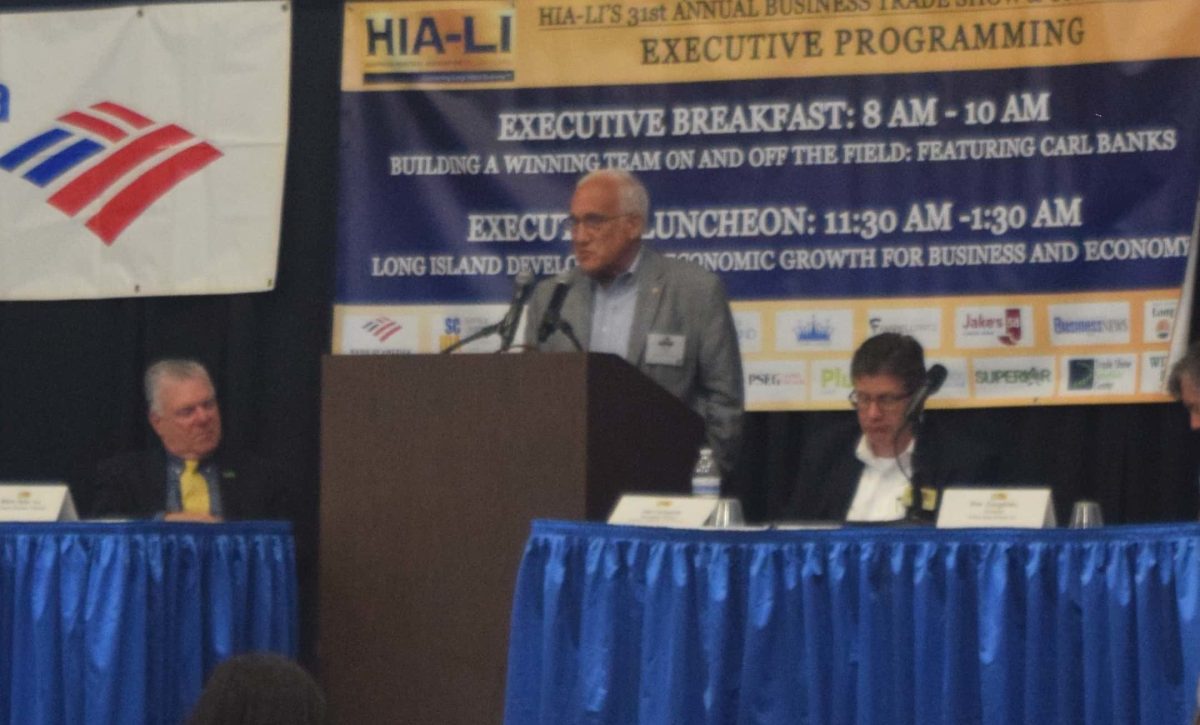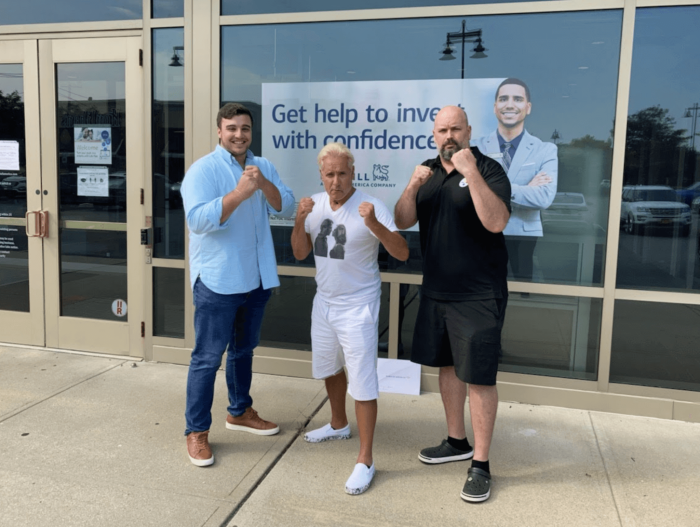The HIA-LI on October 13 released a workforce development plan calling for greater awareness of training, stronger partnerships between academia and industry, more collaboration across business sectors, more affordable housing and better aligning education with employment opportunities.
The 54-page report, “Innovating the Talent Pipeline: Strategies for Workforce Development in the Long Island Innovation Park at Hauppauge,” was done along with the Suffolk County Industrial Development Agency and the Workforce Development Institute.
It was released at an event attended by around 100 at Farmingdale State College at a time when Long Island’s not seasonally adjusted unemployment rate was 3.4 percent in August, a near historic low flat with a year ago.
Nassau’s rate was 3.2 percent and Suffolk’s was 3.5 percent, below the New York State rate of 4.4 percent and national rate of 3.9 percent, as low unemployment makes recruiting even more challenging.
“We continue to hear over and over again that filling the talent pool is more than difficult,” HIA-LI President and CEO Terri Alessi-Miceli said. “It was more than difficult in Covid and it continues.”
The HIA-LIA created a workforce development taskforce chaired by H2M Architects and Engineers President and CEO Richard Humann and Suffolk County Community College President Ed Bonahue, obtaining a grant through the Workforce Development Institute.
Alessi-Miceli said Long Island Regional Economic Development Council studies also were used for guidance.
The Innovation Park at Hauppauge, the target of this study, itself was viewed as a microcosm with 1,600 acres, 55,000 employees, 1,300 companies and $13.4 billion annual sales volume, equal to the entire national GDP of the Bahamas.
“There are more opportunities than ever for jobs in manufacturing,” said Robert Kufner, president and CEO of Hicksville-based Designatronics Inc. “Now’s the time.”
The report focuses on skill sets needed now and in the future and strategies employers can use to attract and retain workers.
“It’s a holistic view of what’s going on today and some concrete recommendations that we will follow up,” Alessi-Micelli said. “We use the Long Island Innovation Park (at Hauppauge) as a template.”
Humann said the report seeks to come up with strategies to “better connect businesses, people looking for opportunities, talent, universities, academia.”
He said 80 percent of their businesses are small, which may not have the same resources to recruit.
“They normally don’t have the wherewithal to overcome some of the challenges to recruit and retain talent,” Humann added.
James Lima Planning conducted the study following a 2019 study on the Hauppauge Industrial Park’s regional competitiveness and growth strategy and a 2020 study on preparing Long Island’s workforce for the future.
“The talent pipeline is key to business success,” James Lima, president of James Lima Planning and Development, said at the event. “We heard the jobs are here on Long Island. We need to find a better way of connecting to them.
Demographic and population changes are impacting the region with people having fewer children, an aging population and high taxes.
“This has an impact on folks’ willingness to move and stay here,” Bonahue, president of Suffolk County Community College, said. “But there are opportunities. In academia, increasingly we acknowledge that we have to be more agile.”
He added that attracting and retaining young people as well as quality of life issues matter, making collaborating with higher education institutions crucial in the region’s training and employment cycle.
Baha Zoghi, assistant dean of Farmingdale State College’s School of Engineering, said the school works with companies such as Estee Lauder. “It’s hard for young people to stay here,” she said of the importance of retaining young workers. “Let’s see what can be achieved.”
Lima said that “it’s not really about just training people,” but companies creating cultures conducive to workers staying through big chunks of their career.
“How do we continue to nurture, to attract and retain the best possible talent?” he said.”How can we become increasingly competitive?”
The study found a lacking foundation of basic skills, what the HR manager at a nutraceutical manufacturing company described as “English language skills and basic understanding of machines.”
The HR leader in a a facility management company called for fostering creative thinking and leadership skills in high school and college.”
Yuxiang Luo, director at James Lima Planning and Development, said more than 90 percent identified talent attraction and retention as a top priority, but only 77 percent had a policies and benefits toward that end.
He said schools need to catch up with training regarding technology and that remote work has made workers more flexible, while increasing competition for them.
“People have more choices,” Luo told the group, noting hybrid and remote work patterns remain. “They can work remotely.”
The study called for fostering a pathway and culture for learning and advancement. “This is increasingly important in a remote world,” Luo said. “Quite a few companies have mentorship programs.”
Liz Uzzo, senior vice president of human resources at H2M Architects and Engineers, said knowledge transfer, flexibility, career planning and learning are crucial.
“They want to know how they’ll be developed,” she said. “It’s about their development and how they visualize where they can go in the organization.”
She said H2M, which employs about 550, has transferred people to more convenient offices and provides flexibility in terms of starting and finishing time.
Bonahue said some skills require hands on applications, ability to work on teams and communicate well.
“We’ve tried to acknowledge the way we approach workforce training has to be dynamic,” he said.
Suffolk County Community College done customized training targeting specific companies. After a solar installation company contacted them, they created a seven-week introduction to carpentry, electronics and solar power.
“Industry supplied an instructor,” Bonahue said. “We got students through the didactic portion into a lab and a job site.”
While business owners may not be able to make huge, rapid shifts, those involved in the study called for businesses to be proactive.
“Understand your needs. Understand your priorities,” Humann said. “Take from this planning study the things most relevant to you.”




























